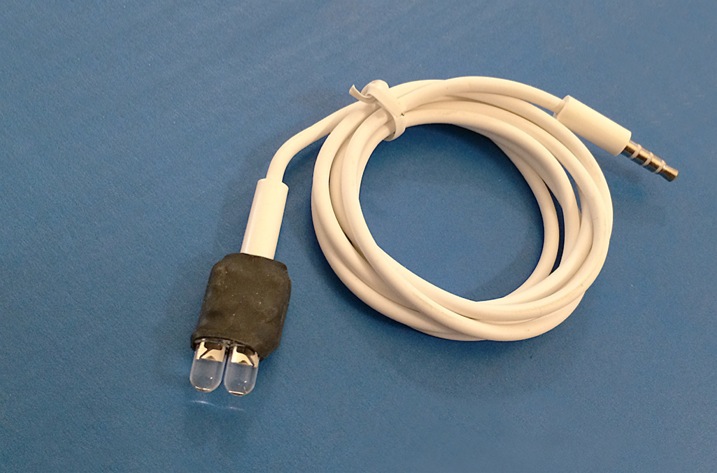IR Transmitter
SetMyCamera’s Remote Camera Trigger feature requires an IR transmitter and a supported camera as outlined below. The IR transmitter described here will connect to your iPhone or iPad by a stereo plug as used the headphone connector. For devices without a headphone connector, a lightning to headphone connector adapter is required.
Do-it-yourself instructions can be found below for creating your own IR transmitter.
Use of the IR Transmitter requires SetMyCamera Pro or an upgraded version of SetMyCamera and a camera model supporting the IR protocol as listed below.
Canon cameras supporting the IR protocol:
Canon ELPH 370Z, Jr., Sport, Z3,
Canon ELAN 7/7E/7N/7NE, Elan II/IIE,
Canon Sure Shot 130u, 130u II, Z115, Z135, Z155, Z180u, Z90W,
Canon EOS Rebel XT, XTi, XSi,
Canon EOS Rebel SL1, T1i, T2, T2i, T3i, T4i, T5i, T6i, T6s, T7i,
Canon EOS 5D, EOS 5D Mark II, 5D Mark III, 5D Mark IV,
Canon EOS 5DS, 5DS R,
Canon EOS 6D, 6D Mark II,
Canon EOS 7D, 7D Mark II,
Canon EOS 60D, 60Da, 70D, 77D, 80D,
Canon EOS 100D, 300D, 350D, 400D, 450D, 500D, 550D, 600D, 700D, 750D,
Canon EOS M, M2, M3, M5, M6.
Nikon cameras supporting the IR Protocol:
Nikon 1: J1, J2, J3, V1, V2, V3,
Nikon D40, D40x, D50, D60, D70, D70s D80, D90, D600, D610, D750,
Nikon D3000, D3100, D3200, D3300, D3400,
Nikon D5000, D5100, D5200, D5300, D5500,
Nikon D7000, D7100, D7200, D7500,
Nikon CoolPix A,
Nikon CoolPix P900,
Nikon CoolPix P7000, P7100, P7800,
Nikon 7700, 8400, 8800,
Nikon F65, F55, N65, N75, Pronea S, Nuvis S,
Nikon Lite•Touch 150ED QD, 140ED QD, 130ED QD, 110s QD, 100W QD.
Consult camera owners manual for use of IR remote triggering, MLU, bracketing and bulb mode settings. Use of the IR protocol is a one way communication limited to the triggering of a supported camera. SetMyCamera and the IR Protocol are not able to remotely configure a camera. It is the photographers responsibility to properly configure the camera by methods outlined in the camera’s user manual.
Do it Yourself - IR Transmitter.
Step by Step instructions.
Parts list include:
2 each 940nm LEDs,
3.5mm / 1/8inch male stereo connector,
Heat-shrink tubing,
Tools:
Soldering iron & Solder,
Wire cutters & strippers,
Skills required:
Soldering, wire stripping and patience.
Part availability:
Local electronics stores such as Radio Shack carry these common components,
Assembly Instructions
Strip ends of wire as shown below. Some stereo connectors may use two sets of 2 wires per channel in which case the ground wires from each should be connected together and soldered.
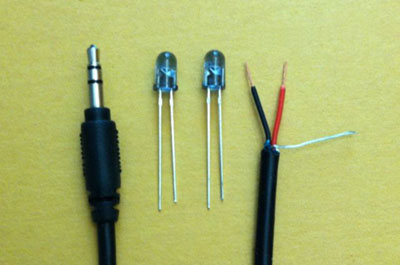
The ground wire can be removed. Next we slip a length of heat-shrink tubing over the wire for use at the last step.
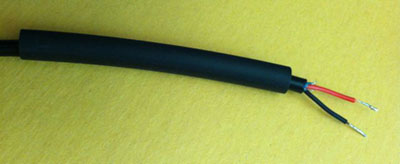
Notice the LEDs have unequal length leads. This difference indicates polarity of the LED. We want to join the two LEDs together connecting the long lead to the short lead.
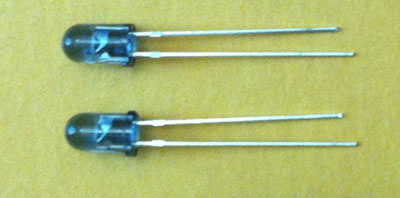
Solder the 2 LEDs together. Notice the LEDs are joined connecting differing length leads to each other.
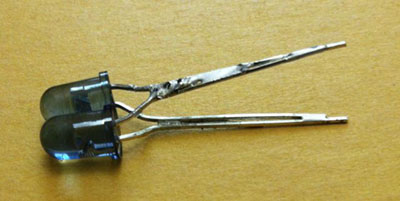
Slip one piece of short heat-shrink tubing over the LED and using heat from either the soldering iron or heat gun to shrink the tubing. Slide a second piece of tubing over the first for use later. Solder one lead of the stereo wire to one lead of the LEDs. Polarity is not an issue here.

Slide the second piece of tubing over the solder joint and shrink it into place.
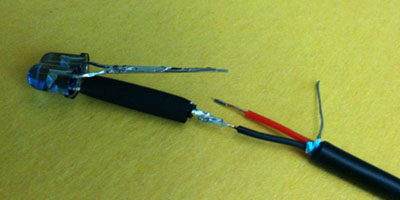
Repeat steps 5 & 6 on the second set of LED leads.
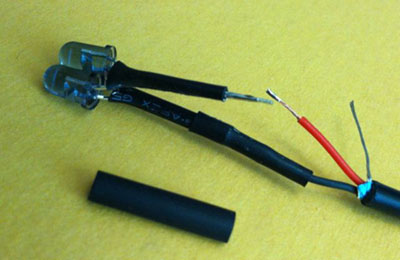
The assembly should look like the image below. The next step is to slide the last heat-shrink tube from step 2 into place and shrink it.
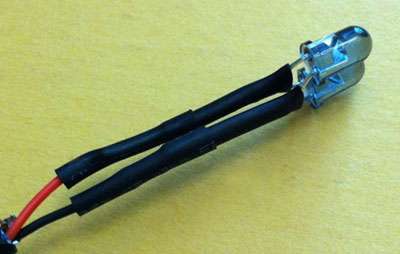
The final assembly should look like this. The next and final step is to test it.
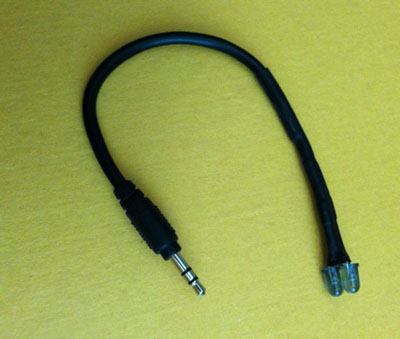
An alternative would be to use a stereo plug without a cable. This type of connector may interfere with iPhone cases so be sure to test that the connector inserts fully into the iPhone.
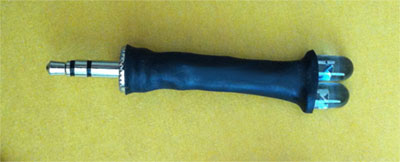
 Welcome to SetMyCamera.com
Welcome to SetMyCamera.com